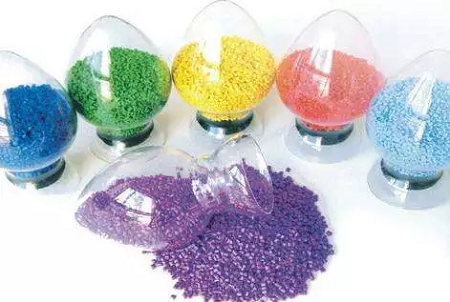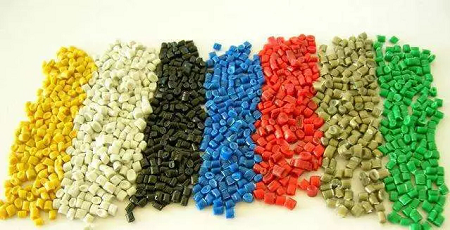Plastic heat resistance index and classification introduction
One of the disadvantages of plastics compared to conventional materials such as metals, ceramics, and glass is that heat resistance is not high, which often limits their use in high temperature applications.
In plastic materials, different types of plastics have different heat resistance; some have low heat resistance and some have higher heat. Heat-resistant plastics generally refer to a class of plastic products having a heat distortion temperature of 200 ° C or higher.
The indicators for measuring the heat resistance of plastic products include heat distortion temperature, Martin heat resistance temperature and Vicat softening point, among which heat deformation temperature is most commonly used.
The relationship between the above three heat resistance indexes of the same plastic is as follows: Vicat softening point > heat distortion temperature > Martin heat resistant temperature

The plastics are divided into the following four categories according to the heat resistance of the plastic:
Low heat resistant plastic
A class of resins having a heat distortion temperature of less than 100 °C. Specific varieties are: PE, PS, PVC, PET, PBT, ABS and PMMA.
Medium heat resistant plastic
A type of resin having a heat distortion temperature between 100 and 200 °C. Specific varieties are: PP, PVF, PVDC, PSF, PPO and PC.
High heat resistant plastic
A type of resin having a heat distortion temperature between 200 and 300 °C.
The specific varieties are:
Polyphenylene sulfide (PPS) has a heat distortion temperature of 240 ° C.
The heat distortion temperature of chlorinated polyether can reach 2l0 °C,
Polyarylsulfone (PAR) has a heat distortion temperature of 280 ° C.
PEEK has a heat distortion temperature of 230 ° C.
The thermal deformation temperature of POB can reach 260~300C.
The heat distortion temperature of the fusible PI is 270-280 ° C.
The aminoplast has a heat distortion temperature of 240 ° C.
EP has a heat distortion temperature of 230 ° C.
The heat distortion temperature of PF can reach 200 °C.
Ultra high heat resistant plastic
A class of resins having a heat distortion temperature greater than 300 °C. There are few types, such as: polyphenyl ester has a heat distortion temperature of 310 ° C, polybenzimidazole (PBI) has a heat distortion temperature of 435 ° C, and non-melting PI has a heat distortion temperature of 360 ° C.
So what is the most high temperature resistance?
The long-term working temperature of polybenzimidazole PBI can reach 310 °C, and the short-term use temperature can reach 500 °C. Polybenzimidazole PBI is one of the most high-temperature resistant plastics at present, but the price is also the highest in plastics, and the processing is difficult. Therefore, the most high temperature resistant plastic is polybenzimidazole PBI.
The second high temperature resistant plastic should be polyimide PI. The long-term working temperature can reach 290 °C, and the short-term can reach 480 °C. It can work in -240 °C environment.

Other high temperature resistant materials
Polyamideimide PAI (also known as TORLON) is also a thermosetting plastic with a long-term operating temperature of 250 ° C and excellent low temperature resistance. TORLON also has excellent wear resistance and impact resistance.
Polyetheretherketone PEEK, long-term working temperature up to 160 ° C, short-term working temperature up to 260 ° C, enhanced grades with better high temperature performance.
Polyetherimide PEI, long-term working temperature up to 170 ° C, short-term working temperature up to 200 ° C.
The long-term working temperature of polyphenylene sulfide PPS can reach 220 °C, and the short-term working temperature can reach 260 °C.
Polyvinylidene fluoride PVDF has a long-term working temperature of 150 ° C and a short-term working temperature of up to 160. It also has excellent corrosion resistance and high mechanical strength and rigidity.
Polytetrafluoroethylene PTFE has a long-term working temperature of 260 ° C and a short-term working temperature of 280 ° C. It has excellent corrosion resistance and is commonly known as "Plastic King". It also has an extremely low coefficient of friction.
Polysulfone PSU has a long-term operating temperature of 150 ° C and a short-term working temperature of 180 ° C. Polysulfone PSU also has good comprehensive electrical properties. PES performance is similar to PSU, with higher operating temperature, long-term operating temperature of 180 ° C, short-term 220 ° C.
Nylon 46, with a long-term operating temperature of 135 ° C, has excellent toughness and good chemical resistance.

Yancheng Ruize Masterbatch Co., Ltd. mainly produces and operates: Polyester masterbatch, Non-woven masterbatch, Non-woven antibacterial masterbatch,antistatic masterbatch, polypropylene filament masterbatch, Polypropylene filament masterbatch, Polyester masterbatch, polypropylene spunbond non-woven masterbatch, Polypropylene fiber masterbatch, chemical masterbatch, polypropylene masterbatch, Polyester masterbatch, Soft hydrophilic masterbatch.
- Mizlion made a stunning appearan
- Why is it said that polypropylen
- The impact of the Federal Reserv
- Chemical fibers "carry static el
- What are the core considerations
- The High Performance and High Fu
- At the end of the year, a new ch
- Exhibition Invitation: Ruize Mas
- Ruize Masterbatch congratulates

